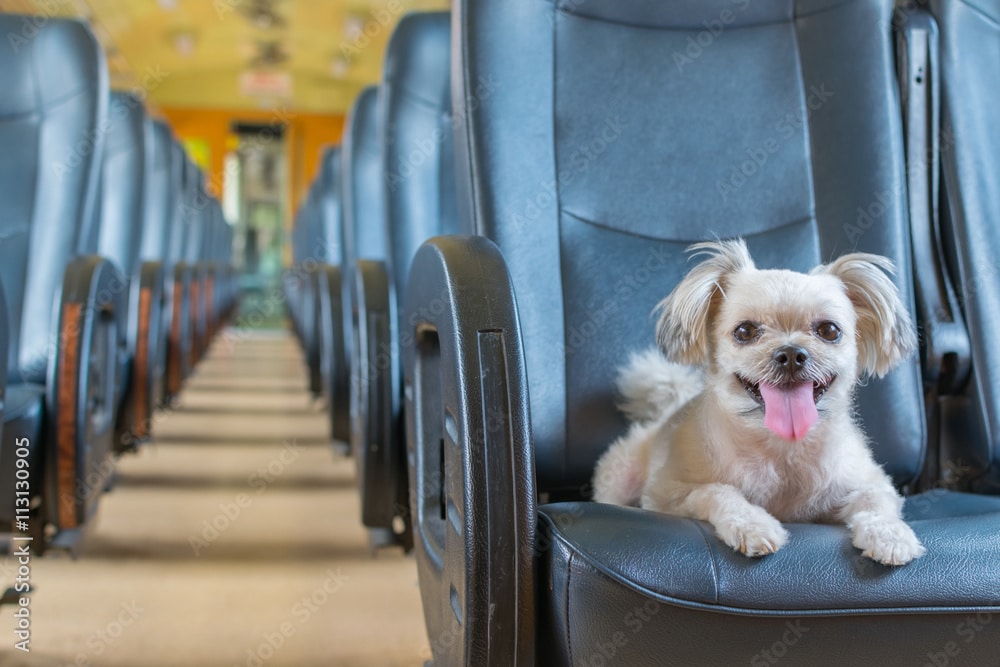Everything, Dogs, Travel
Traveling with your dogs – Should you take your dogs with you?
You’re planning your vacation, or you are going to be traveling with your dogs for other reasons. Should you take your dogs with you? If you take them how do you prepare for travel with your dog? The answers depend on your dog, the traveling type and distance, and the destination.
What to consider beforehand:
The SPCA recommends against traveling with pets if possible. Dogs, however, are generally more adaptable to travel than other animals are, and most dogs want to be with their people as much as possible. If you want to travel with your dog, ask yourself these questions:
Your dog
- Is your dog in good health and able to easily adjust to temperature changes during the trip and at your destination?
- Is your dog accustomed to travel and being in unfamiliar places?
- Is your dog well socialized?
The traveling type and distance
- If you’ll be traveling on an airplane or other public transportation, is your dog comfortable confined to a travel crate or travel carrier for lengthy periods of time? Can you get a direct flight to your destination?
- If you’ll be traveling by motor vehicle, does your dog look forward to traveling in a vehicle? Will you have time to stop often? Will you be able to take your dog with you when you leave the vehicle, especially on hot days?
The destination
- Does your destination have pet-friendly accommodation?
- Will your dog be able to accompany you during activities at your destination?
If the answer is no to any of the above questions, your dog may be happier at home with a pet sitter or in a kennel, where the conditions will be suitable for dogs.
If the answer to all of the above questions is yes, consider bringing your dog with you but be aware of what can go wrong when traveling with a dog.
Dog identification
Whatever your mode of transportation, be sure that your dog is wearing a collar with an ID tag at all times. If you have a cell phone or destination phone number, include it on the ID tag. Your dog will be identifiable even if he loses his collar if he also has a microchip implant or ear tattoo.
A current photo of your dog is useful to have with you in case your dog goes missing.
Planning transportation for your dog
Travelling with dogs by air
Air travel for dogs carries risks. Airlines consider dogs baggage, and every year, some animals become injured or even die from the conditions and handling they experience as airplane cargo items.
Some airlines allow dogs, particularly small dogs, to travel in the cabin with their owners. If you’ll be traveling by airplane with a dog, find out if the airline allows dogs to travel in the cabin. Also ask if the airline requires a specific type of dog carrier or if they have any other restrictions for dogs on airplanes.
For a long list of tips for traveling with dogs and other pets, see Tips for Safe Pet Air Travel.
Travelling with dogs in a vehicle
When traveling in a car or other motor vehicle with a dog, stop regularly to give your dog bathroom and exercise breaks. Offer him water whenever you stop.
Bring with you:
- Travel dog bowls for food and water
- Dog food and, depending on where you’re going, water
- Medication, if your dog is on medication
- Plastic bags for cleaning up after your dog
- A towel to clean or dry your dog if necessary, or to cool him down if he’s hot
- A leash
- A calmative like Feliway with D.A.P to reduce stress anxiety
Never leave your dog alone in a car in hot weather. Heat stroke can develop within a few minutes. The Odor Destroyer article Protecting Your Pet from Summer Heat covers how to protect your pet from heat exhaustion and heat stroke.
International travel with dogs
If you’re traveling to another country with your dog, your dog will probably be required to have up-to-date vaccinations. Depending on the destination, a quarantine period may be required. Check the requirements of the country you’re planning to visit about vaccinations and any other restrictions concerning dogs.
Dog-friendly accommodation
Hotels that allow dogs are becoming easier to find. To find hotels at your destination that accept dogs as guests, do an online search for “dog-friendly accommodation.” This search will produce listings of directories of hotels and other types of accommodation that allow dogs.
You are responsible for your dog and any damage he may cause. Bring him with you whenever possible when you leave the hotel. If you must leave him unattended in the hotel room, put a “Do not disturb” sign on the door handle so that hotel staff don’t unexpectedly encounter your dog.
At your destination, give your dog plenty of exercise. A tired dog is less likely to exhibit behavior problems.
With exercise, companionship, and all of his needs met, chances are that your dog will enjoy the trip as much as you will.


